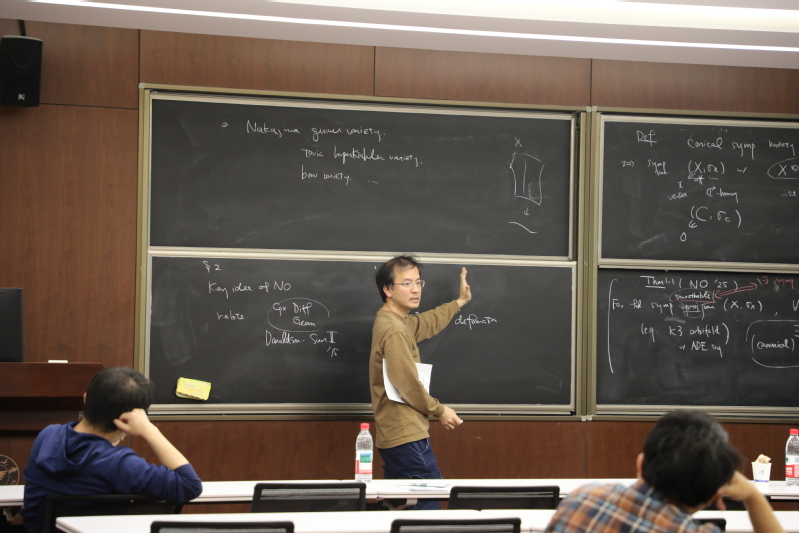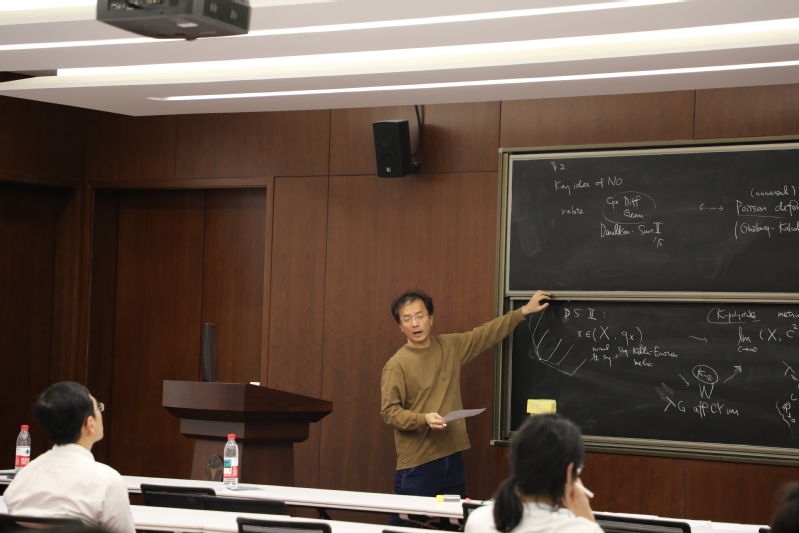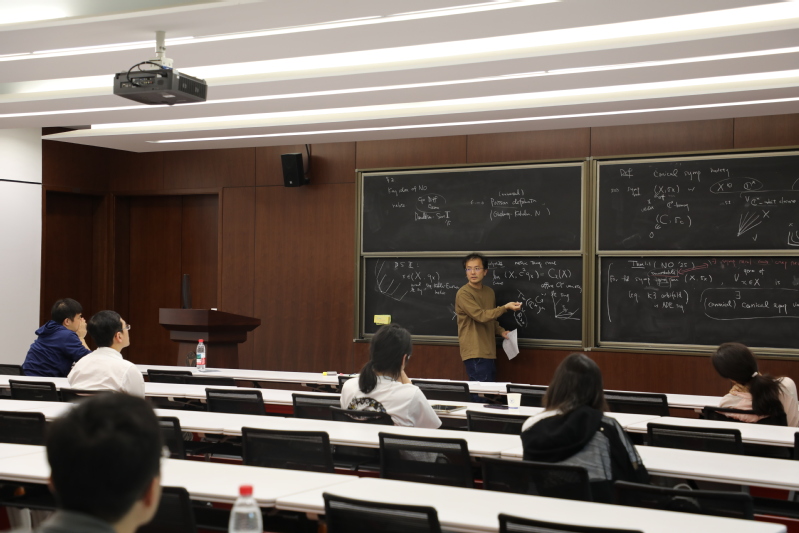Seminar by Yuji Odaka: Tangent cone, bubbling, compactness and algebraic geometry



Date: Tuesday, April 8
Venue: Lecture Hall of IASM
Speaker: Yuji Odaka 尾高悠志 (Kyoto University)
Pretalk: Canonical torus action on (holomorphic) symplectic singularities
Time: 16:00-16:30
Abstract: Symplectic singularities arise from e.g., nilpotent orbit closure, compact hyperKahler varieties, quiver varieties, and so on. These have been studied actively recently, not only in algebraic geometry, but from geometric representation theoretic or string theoretic perspectives. 2-dimensional case is the classical orbifolds, the so-called Klein / ADE singularity. D. Kaledin conjectured around 2000 that they are always quasi-homogeneous, i.e., admit local good C^*-action. We prove the conjecture conditionally by a new approach, i.e., using complex differential geometry and related algebraic geometry with Poisson structures. In particular, we obtain a canonical action with DG interpretation. Joint with Yoshinori Namikawa.
Research talk: Tangent cone, bubbling, compactness and algebraic geometry
Time: 16:40-17:30
Abstract: In the latter half, we talk about more general or technical aspects. First main aspect of our approach to the Kaledin’s conjecture to interpret the predicted conical structure as metric tangent cone, after the Donaldson-Sun theory which revealed general algebro-geometric structure underlying the general metric tangent cone of klt singularities with local singular Kahler-Einstein metrics (the second aspect is understanding of Poisson deformations). Their method is extended to understanding the bubbling of the metric family with euclidean volume growths e.g., Kronheimer ALE space. As in the case of (metric) tangent cones, these bubblings, or older Gromov-Hausdorff limit of compact Kahler-Einstein manifolds (singular Q-Fano var, by Donaldson-Sun I) etc are all some differential geometric limits which turn out to be varieties. I plan to explain key ideas and methods of how their underlying limit varieties can be algebro-geometrically re-constructed or recovered in a somewhat unified deformation theoretic manner (without any technical prerequisites in algebraic geometry).




